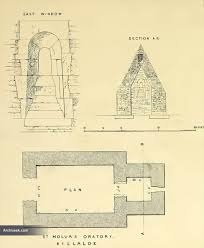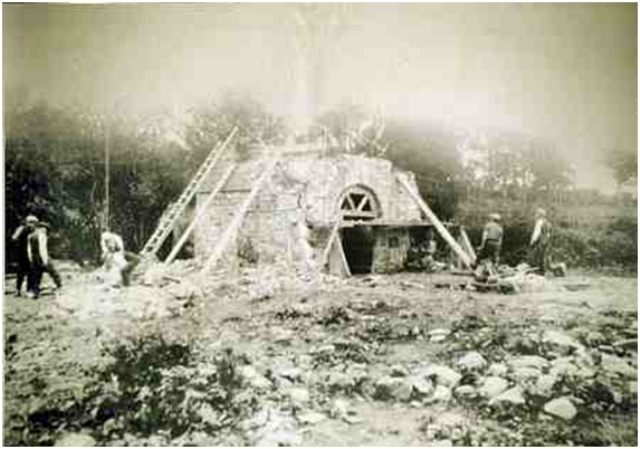St. Luas (or Moluas) Oratory, Killaloe:
Now standing in the grounds of St. Flannan’s Catholic Church in the Green, Killaloe, not much is known about its ancient history. However it is thought to date from the 9th or 10th century.
It was built by St. Molua, also known as Lua or Da Lua who was a 6th century saint. Molua was a Christian abbot in the early Middle Ages. Killaloe is named after this Saint – “Cill Da Lua” meaning Church of St. Lua.

The oratory consists of a Nave and a Chancel. The Nave (which is the open part of the structure) is the older part of the building – it was a rectangular church and would have had a thatched roof. The chancel was added to the building at a later stage – an entrance to this was made by knocking portion of the original wall and inserting an arch.
St. Luas Oratory has only stood on the current site since 1930. Prior to this, the oratory stood on a small island in the River Shannon outside the town of Ballina, known as Friars Island. When it was realised that Friars Island and St. Luas Oratory would be completely submerged due to the raising of the water level in the Shannon in connection with the Shannon Hydro-Electric Scheme in 1929, it was decided that St. Luas Oratory would be moved from Friars Island to the mainland.
Before the oratory was taken down, each stone was marked individually so that it could be reconstructed at the new site in the same way. The stones of the oratory were moved from the island to the shore by means of a horse-drawn ferry and then taken to the new site by horse and cart. Work on completing the oratory at the current site was completed in July 1930.
There was a Holy Well on Friars Island known as Lady’s Well and this was a place of pilgrimage until the island was submerged. Prior to this, the water level in the Shannon was so low that pilgrims could walk from the mainland to the island.
A stone plague stands on the shoreline approximately 1km from Ballina on the Ballina to Birdhill road, the only evidence that such a fascinating piece of history and pilgrimage once stood nearby.
Arlene White, March 2018


